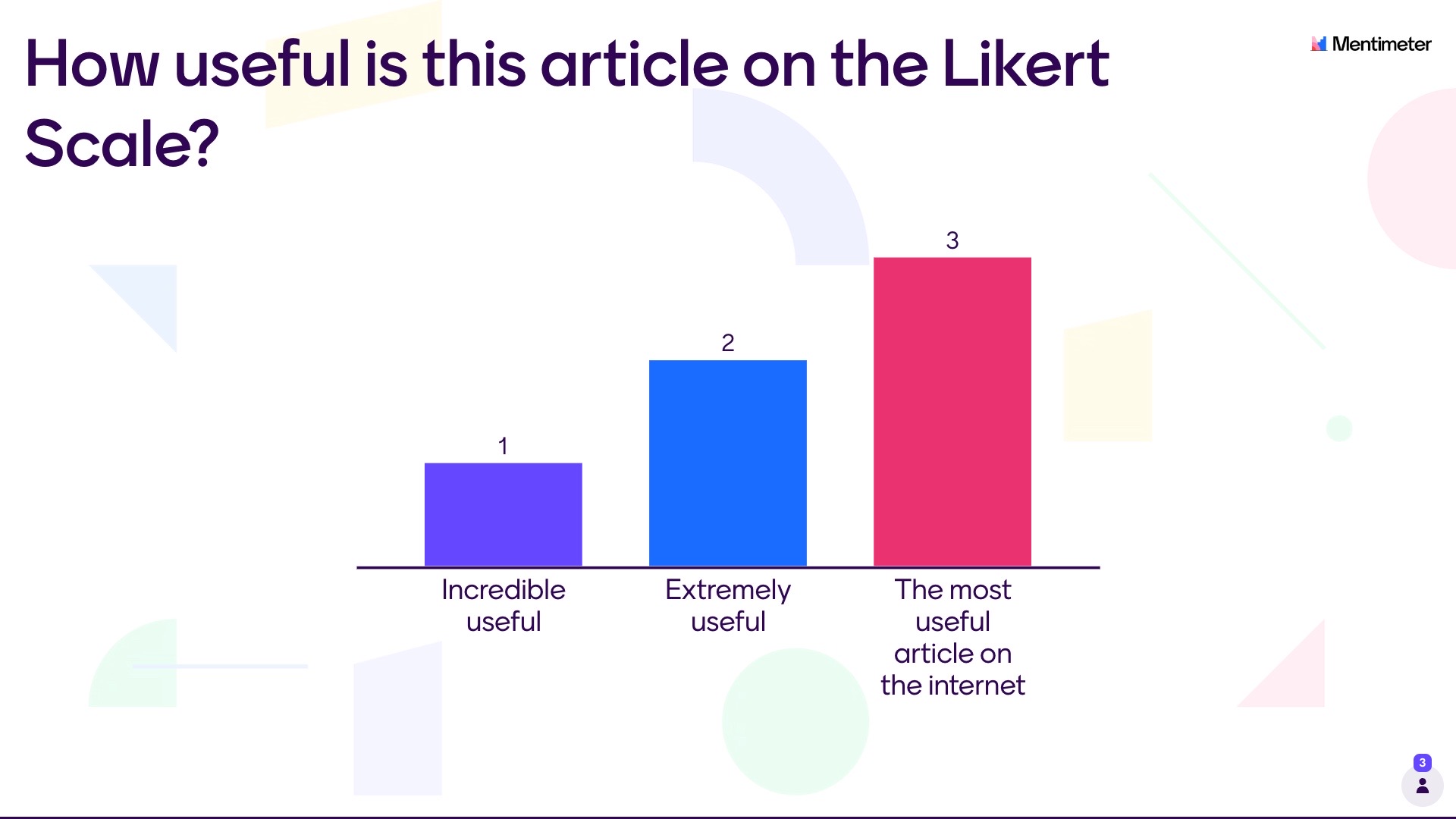A Likert scale is a type of rating scale that measures how people feel and levels of agreement. They’re useful in survey forms or questionnaires and in many different situations. This article explores the Likert scale in depth and will help with examples to get you using it in the right way.
Have you ever seen the picture below? If the answer is no, then let’s get you introduced. This image shows the scale question doctors use to measure the amount of pain a patient is feeling. And this is only one of the hundreds of different scale questions used worldwide as a measurement tool.

Generally, a scale question is defined as a type of closed-ended question (a question that presents respondents with pre-defined answer choices) with a range of words or numbers to represent a wide spectrum of audience opinions, attitudes, perceptions, etc.
You’ll often see Scales in online surveys; think of a Likert Scale as an improved version of the standard “Yes/No” or “Agree or Disagree” question. They can measure audience attitudes and opinions with a larger variety of responses. This kind of question is known as a Likert scale.
Likert scales are widely used to measure attitudes and opinions with a greater degree of nuance than a simple “Yes/No” question. Oftentimes you will see a scale with a series of options ranging from 1-10 or from “Strongly disagree” to “Strongly agree”.
What is a Likert Scale?
A Likert scale is a common approach in survey research, invented by American social scientist Rensis Likert. It uses a 5- or 7-point answer range to measure respondents' opinions or feelings. Respondents can choose a negative, neutral, or positive response to a statement.
Likert scales are a type of rating scale used to measure attitudes, agreement, importance, or likelihood. They assume attitudes are evenly spaced along the rating scale.
Although the terms "Likert scale" and "rating scale" are sometimes used interchangeably, they are not the same. Likert scales are a subtype of rating scales and allow for quantitative data to be collected and analyzed more easily.
However, they can be subject to response bias, as individuals may lie to present themselves in a positive light.
Researchers have investigated the effects of scale layout on response bias. They found that left-side bias occurs when answer options are on the left side of the scale, and respondents tend to choose these options, especially positive ones.
Similarly, vertical scales also show a selection bias, with respondents skipping lower options and choosing top ones more often. Some scale layouts may be more suitable than others to avoid survey bias and ensure accurate responses.

Likert Scale Survey Questions and Examples
Now that we've discussed the idea and definition of the Likert Scale, let's look at some common examples. We have also included a series of Likert templates that you can download and use for free.
Horizontal Likert Scale
According to the Likert scale bias matrix, to keep bias as low as possible in horizontal order, it appears best to place negative attitude options on the left side of the scale and positive attitude options on the right side of the scale.

Horizontal Likert Scale
Vertical Likert Scale
According to the Likert scale bias matrix, to keep bias as low as possible in vertical order, it appears best to place negative attitude options at the top of the scale and positive attitude options at the bottom of the scale.

Vertical Likert Scale
There are two general types of Likert questions: Unipolar and Bipolar.
Unipolar or 5-point Likert Scale
Unipolar scales are a type of measurement tool that asks users to rate the presence or absence of a single thing. These scales are more detailed and precise than other types of scales that ask for ratings on a range of items.
In this example, we have added additional labels for respondents on a 5-point scale. There is no neutral midpoint, as point number 3 is “Moderately satisfied”. Thus this scale weighs more in favor of satisfaction with fewer “negative statements”.
Even though unipolar scales measure data that can only be ranked (not mathematically compared), they often provide more accurate responses.

Unipolar Likert Scale
Bipolar or 7-point Likert Scale
A bipolar scale is a type of measurement tool that asks respondents to balance two different qualities against each other and define their relative proportions.
A bipolar scale usually runs along the succession of -3, -2, -1, 0, 1, 2, 3, numerically. You will notice in this example that we have a definitive middle point labeled “Neither agree nor disagree”. Respondents can thus give a completely neutral answer.
Unlike a unipolar scale which only has one endpoint, a bipolar scale has two opposite endpoints. This can be useful when customer service is conducting a customer satisfaction survey about a product or service.

Bipolar Likert Scale
The importance of surveys and questionnaires
Surveys and questionnaires aren’t just nice to do or kind of useful. They’ve become invaluable tools for any department that hopes to grow, stay innovative, and continue to succeed.
Surveys are quick and easy ways to gather feedback from your employees, students, or audience. If you’re looking for tips and tricks on creating your very own surveys, then we have a selection of blog posts on that very topic.
We also have a number of survey templates you can download with just one click – like those you have seen above. Just think, a survey without all the hassle of typing out every single question. What bliss!



